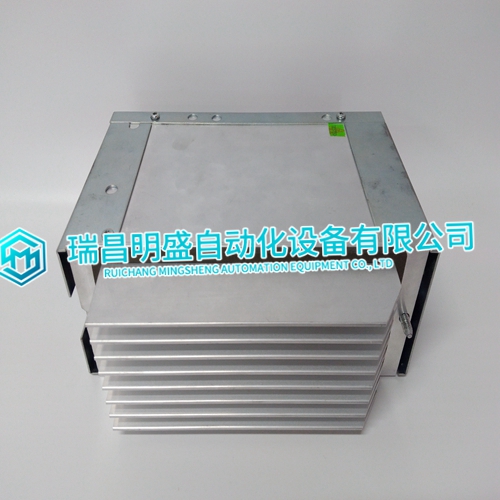Industry news
DSQC604 3HAC12928-1 Teaching, use the tutorial
DSQC604 3HAC12928-1 Teaching, use the tutorial
Address Switches Use the address switches to set the media access control identifier (MAC ID), which the network master uses to address the module. When the device powers up or is reset by the network, the device firmware will read the address switch settings. Figure 3-1 illustrates the address switches. Specific address values range from 0 to 63. • Set the switch labeled “MSD,” to a value of 0 to 6 for the most significant (first) digit. • Set the switch labeled “LSD,” to a value of 0 to 9 for the least significant (second) digit. If a valid address between 0 and 63 is set, and it differs from the current address stored in non-volatile RAM (NVRAM), the new address will be saved in memory. If the data rate switch is set to the PGM setting, the firmware will use the data rate that is stored in NVRAM. Upon connection to the DeviceNet network, the module requests a duplicate address check. • If another device on the network has the same address as the module, the module will not join the network
DeviceNet Switches and Indicator
The Micro-Ion Module has address switches for setting the network address and a data rate switch for setting the baud rate.• If the address is unique, the module will join the network and the net status indicator will blink green until a connection to the master node is established
DataRate Switch Use the DataRate switch to select the rate at which data is sent and received on the network. • You may select a data rate of 125 kbaud, 250 kbaud, or 500 kbaud. • When the device powers up or is reset by the network, the device firmware will read the rate switch setting. If the selected data rate differs from the value stored in NVRAM, the new data rate will be saved in memory. If the rate switch is set to the PGM setting, the firmware will use the data rate that is stored in NVRAM.illustrates the two status LEDs, labeled NET and MOD. • The MOD (module) status LED indicates if the module has power or is functioning properly. • The NET (DeviceNet network) status LED indicates if the DeviceNet network has power and is functioning properly
DeviceNet Communication
Configuration 1. Turn OFF the external power supply. 2. Set the address switches to the desired address (0 to 63). 3. Set the data rate switch to the desired setting (125, 250, or 500 kbaud). 4. Turn ON the external power supply. 5. Refer to Table 3-7 and Table 3-8 to allocate a connection for the module to the network master. You must set the bit to 1 (polled) or 0 (explicit messages) to perform tasks explained in this chapter. • Set the bit contents to 1 to enable polled I/O. • Set the bit contents to 0 to enable explicit messages.Refer to Table 3-9 to configure the expected packet rate for messages. The expected packet rate is the rate at which the module expects to send data to and receive a packet of data from the network. • The default expected packet rate for explicit messaging is 2500 msec (2.5 sec.). • For polled I/O, set the expected packet rate to 0 (none). • If data will be requested at a rate slower than every 2500 msec, you must change or disable the expected packet rate to prevent the connection from timing out.
